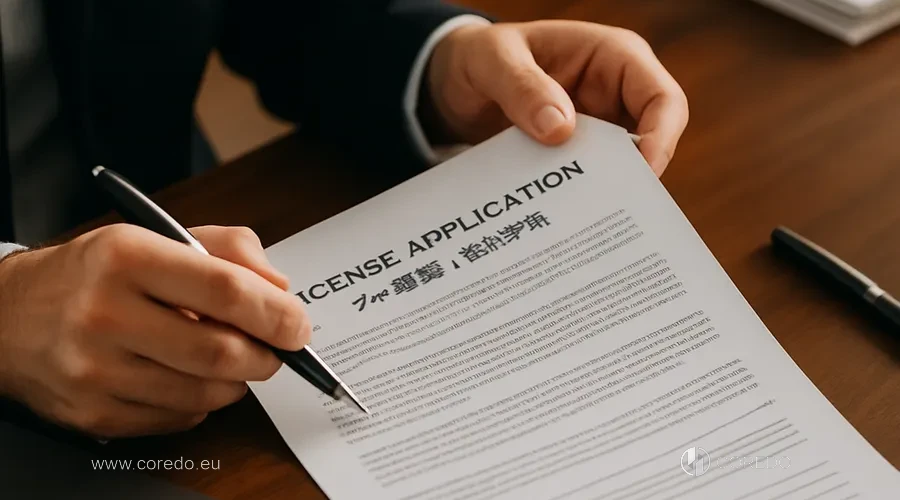In the practice of COREDO we have repeatedly encountered situations where entrepreneurs underestimated the regulatory function of the license, perceiving it as a formality. In reality, a license – is not only the legal basis for conducting activities, but also a key element of financial regulation that determines access to banking infrastructure, international payment systems (Visa, MasterCard, UnionPay), as well as to technology partners and investors.
Licensing: functions and benefits
Licensing of payment operations performs three strategic tasks:
- Prevention of illegal circulation of financial resources: A license requires the implementation of a comprehensive AML/CTF policy, which minimizes the risks of money laundering and terrorist financing.
- Stability of the settlement infrastructure: Regulatory requirements for authorized capital and the financial stability of the payment system operator ensure the reliability and uninterrupted operation of the payment gateway.
- Competitive advantages: Having a payment system license significantly increases customer trust, allows cooperation with leading banks, integration with international payment services, and expansion of the business’s geographic reach.
License requirements for payment gateways

Financial requirements and share capital
The key barrier to obtaining a payment system license is the financial requirements. In different jurisdictions the minimum share capital for a payment license varies significantly: in Estonia: from €350,000 for an EMI license, in the Czech Republic: from €125,000, in Cyprus – from €200,000. For a Payment Service Provider license (PSP) requirements may be lower, but the payment operator’s financial stability and the transparency of funding sources are always assessed.
Organizational and personnel requirements
The company’s structure and the qualifications of the payment system’s managers: another critical aspect. Regulators require:
- A transparent ownership and governance structure.
- Qualified directors and managers with experience in financial services and payment operations.
- The presence of a separate branch or virtual office in the licensing jurisdiction (for example, for Singapore: a mandatory local director and a registered legal address).
AML/KYC requirements and data protection
Modern regulation of payment systems is impossible without strict compliance with AML/CTF policies and the implementation of KYC procedures. The payment system operator must:
- Develop and implement internal rules for combating money laundering.
- Ensure client identification and verification (KYC).
- Organize the protection of payment system users’ data in accordance with international standards (GDPR, PDPA, etc.).
- Implement a system for monitoring suspicious transactions and managing fraud risks.
Process of obtaining a payment system license

Preparation of documents and business plan
The first stage is preparing the complete package of documents for registering a payment system. It includes:
- Constituent documents, company charter, meeting minutes.
- Financial statements and a business plan for obtaining the payment license.
- Documents confirming the lawful origin of funds.
- AML/CTF policies, internal KYC and data protection regulations.
- Certificates confirming the integrity and reliability of owners and management.
Submission of the application and interaction with the regulator
The application is submitted to the authorized financial authority or the central bank of the relevant jurisdiction. Regulatory requirements for payment systems include:
- Verification of the integrity and reliability of the payment system owners (Due Diligence).
- Analysis of the company structure and management qualifications.
- Assessment of AML/CTF policies’ compliance with international standards.
Timelines and stages of the application review
The timeline for obtaining a payment license depends on the jurisdiction and the complexity of the structure. On average:
- Document preparation: 1–2 months.
- Application review and integrity checks: 3–6 months.
- Interaction with the regulator and audit of the payment system: up to 9 months.
Licensing in the EU, Asia and Africa: specifics

EMI license in Europe: requirements
In the EU the main form of licensing is the EMI license (Electronic Money Institution), which allows issuing electronic money, conducting payment transactions and integrating with SEPA, SWIFT, Visa, MasterCard. Main requirements:
- Minimum share capital: from €350,000.
- Compliance with payment activity regulations (PSD2, EMD2).
- Strict AML requirements/KYC and personal data protection (GDPR).
Key differences between Asian and African markets
In Asia (for example, in Singapore) requirements for payment licenses are regulated by the Monetary Authority of Singapore (MAS). Key features:
- Mandatory presence of a local director and a registered address.
- Minimum share capital: from SGD 100,000 for a standard license.
- Strict control over AML/CTF policies and cross-border payments.
Choosing a jurisdiction for registering a payment operator
jurisdiction choice – a strategic decision affecting cost, timelines and scaling potential. It is important to consider:
- Financial and regulatory conditions (requirements for capital, structure, reporting).
- The possibility of opening a virtual office for the payment license.
- The reputation of the jurisdiction among international banks and partners.
Licensed payment gateways: technological and operational aspects

Integration and security of payment systems
A modern payment gateway is not just software but a comprehensive payment infrastructure integrated with banks, international payment networks and third-party services. Critical aspects:
- API integration with banks and partners.
- Protection of payment system users’ data using encryption and multi-layer authentication.
- Cybersecurity of payment systems, a mandatory requirement for passing audits and meeting regulator requirements.
Choosing partners and infrastructure
The successful operation of a payment gateway is impossible without reliable technology partners and infrastructure providers. Key points:
- Assess partners’ experience and reputation in the market.
- Choose cloud payment solutions that provide scalability and fault tolerance.
- Enter into transparent agreements with providers, taking into account the regulator’s requirements for data storage and processing.
Technology compliance with regulatory requirements
The technological infrastructure must not only provide fast and convenient payments but also meet the requirements for risk management in payment systems:
- Implementation of a system for monitoring suspicious transactions.
- Regular vulnerability testing and security audit.
- Compliance with payment operation regulations and cybersecurity standards.
Risks and risk management when working with a payment license

Key risks for payment operators
Payment system operators face three groups of risks:
- Operational risks: service disruptions, technical errors, human factors.
- financial risks: insufficient capital, losses due to fraud.
- Reputational risks: data breaches, regulatory non-compliance.
AML/KYC compliance and data protection
To meet AML/CTF requirements and protect personal data, it is necessary to:
- Continuously update internal policies and procedures.
- Conduct regular training for staff.
- Use automated KYC procedures and transaction monitoring systems.
Monitoring and auditing of the payment system
Effective compliance monitoring includes:
- Conducting regular audits of the payment system.
- Monitoring changes in regulatory acts and adapting internal procedures.
- Planning crisis management and recovery after failures.
Practical recommendations for entrepreneurs
How to prepare for licensing
- Assemble a team with relevant experience and qualifications.
- Prepare a complete set of documents, including a business plan, AML/KYC policies, and proof of funding sources.
- Conduct preliminary due diligence on owners and executives.
How to choose a jurisdiction and a partner
- Assess capital requirements, company structure, and reporting obligations across different countries.
- Consider opening a virtual office for the payment license.
- Choose technology partners with experience integrating payment systems and complying with security standards.
How to minimize risks and pursue long-term development
- Implement a risk management system in payment systems with regular audits and monitoring.
- Plan the scaling of the payment system with the requirements of new markets in mind.
- Invest in team training and updating compliance procedures for the long-term development of the payment system.
Conclusions and next steps
- Prepare a complete package of documents and a business plan in line with regulator requirements.
- Choose an appropriate jurisdiction, taking into account financial and regulatory conditions.
- Ensure AML compliance/KYC and protection of user data.
- Take care when selecting technology partners and infrastructure.
- Plan risk management and audits for sustainable business development.
| Licensing stage | Main requirements | Timeframe (approx.) | Key documents |
|---|---|---|---|
| Document preparation | Articles of association, business plan, financial reports | 1-2 months | Articles of association, minutes, financial documents |
| Application submission and review | Due diligence checks, AML/KYC | 3-6 months | Application, AML/KYC documents |
| Interaction with the regulator | Responses to inquiries, payment system audit | Up to 9 months | Additional documents, audit reports |
| obtaining the license | Official authorization, registration | After successful completion | License, authorization documents |
If you want to go through the payment system licensing process without unnecessary risks and delays, the COREDO team is ready to become your strategic partner at every step: from choosing a jurisdiction to building a scalable payment infrastructure.